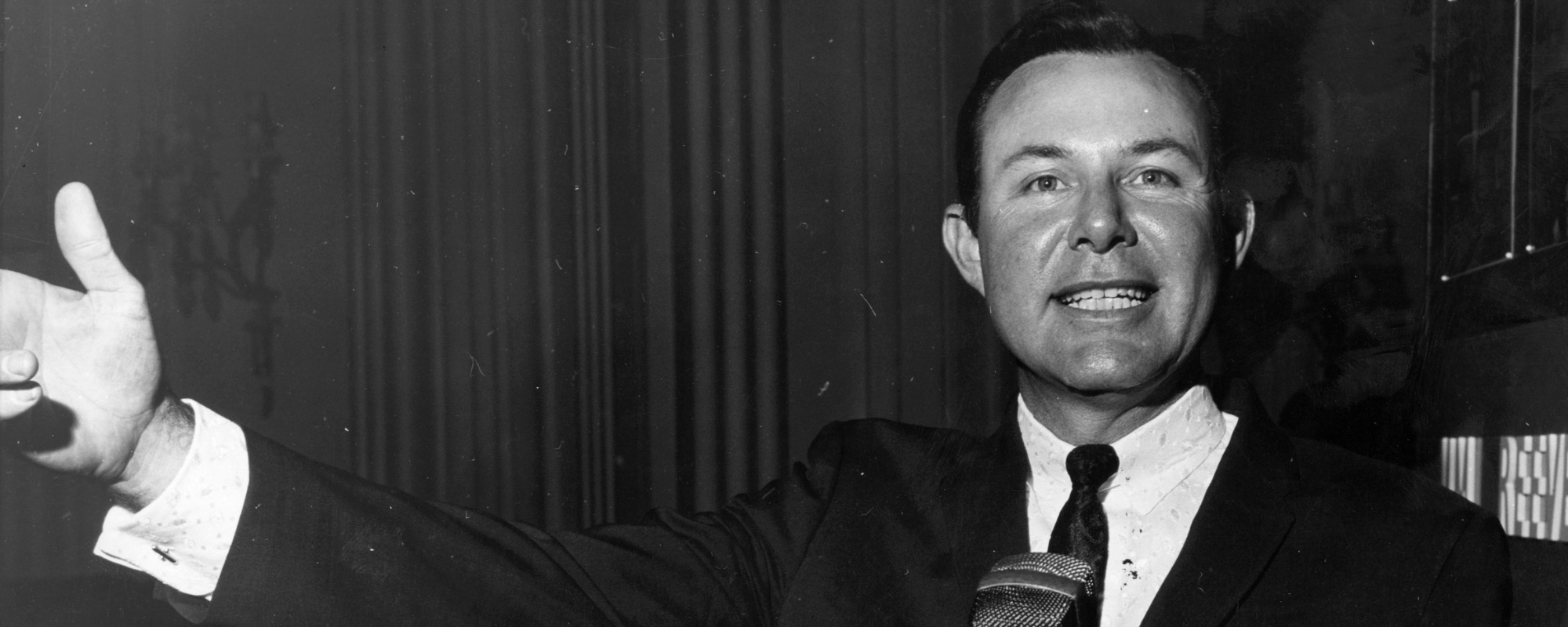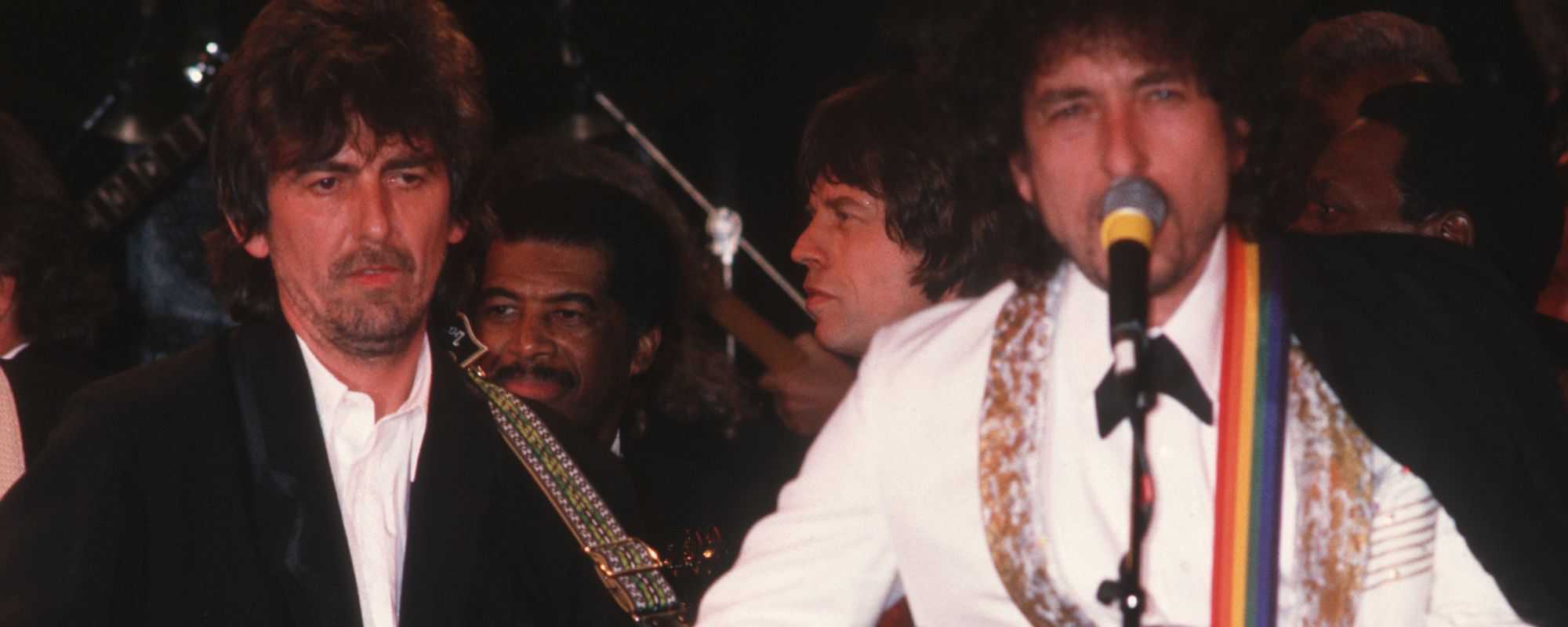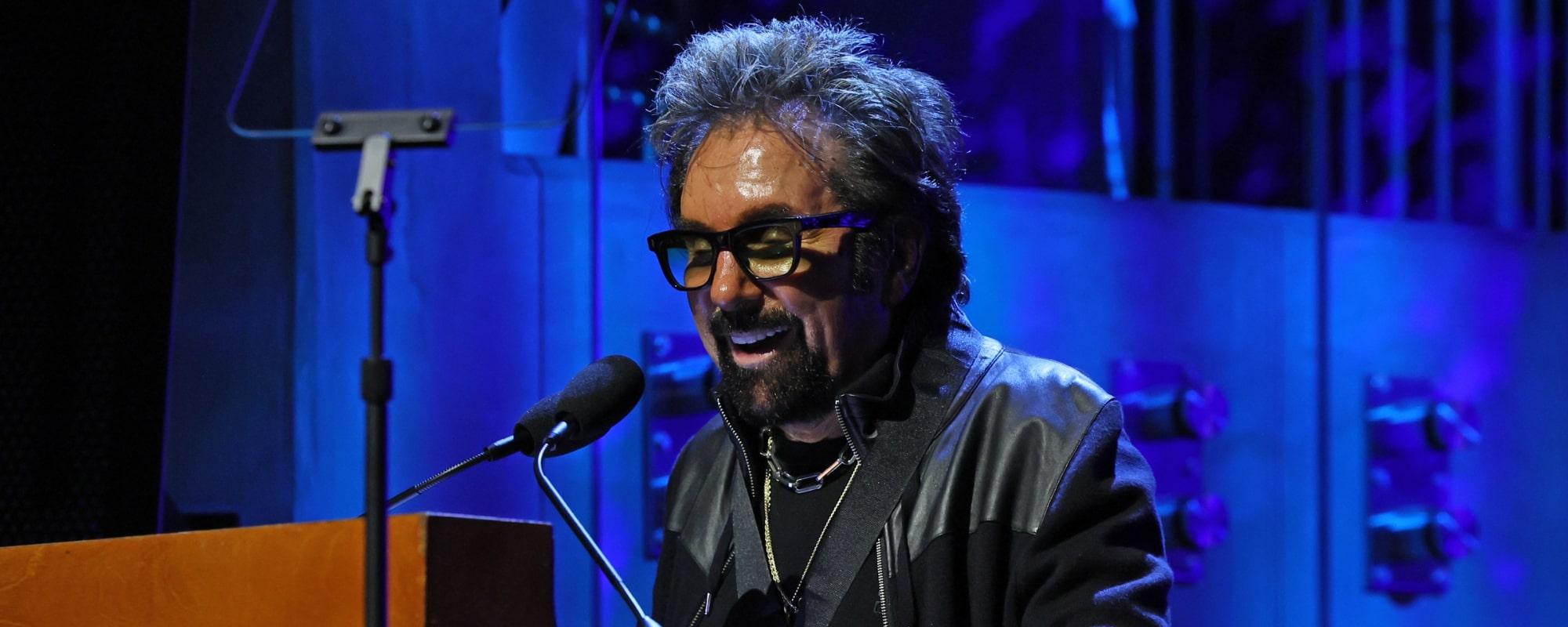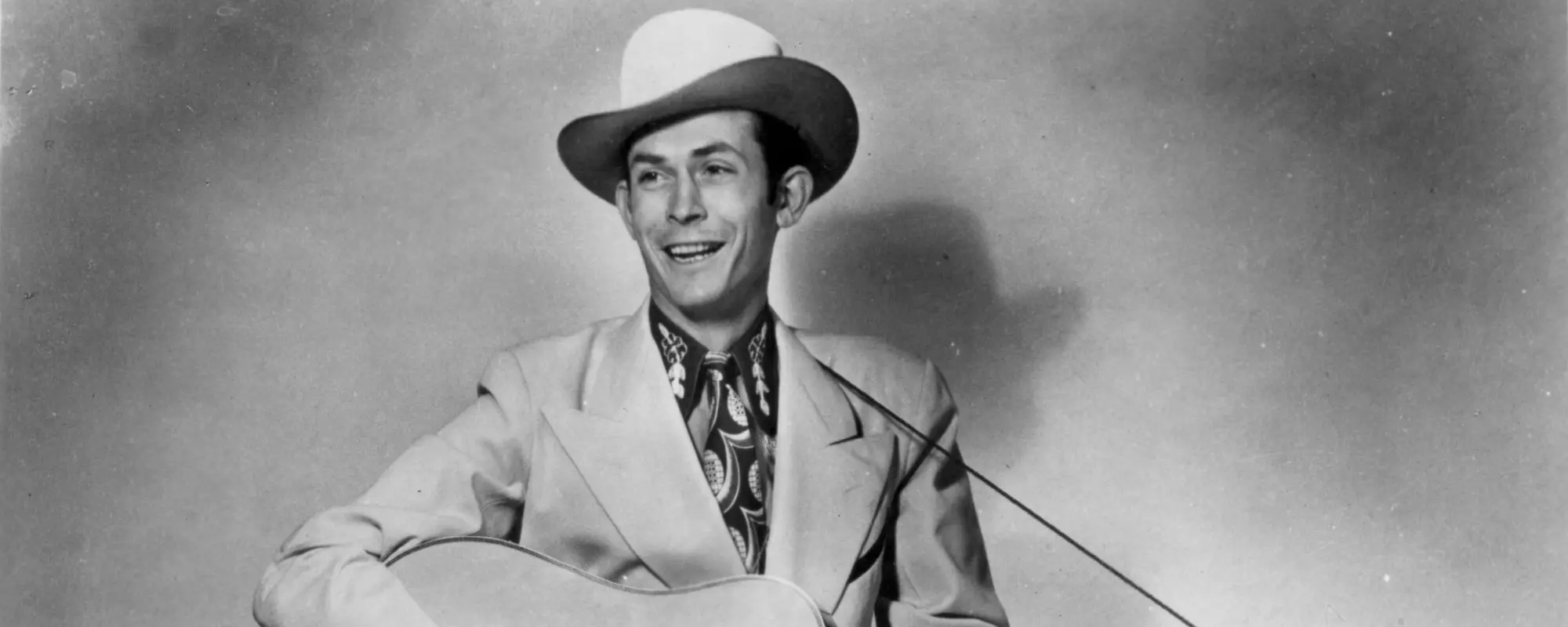On May 1, 1956, Johnny Cash debuted a new single and clever dollar bill trick, both of which would come to define his signature sound for decades to come. Cash’s late spring release was a staple of his early years with Sun Records and followed his first two singles, “Cry! Cry! Cry!” and “Hey Porter.”
Videos by American Songwriter
The former of those two tracks performed relatively well on the charts. But his May 1956 track would be his first No. 1 hit, changing the way mainstream country music sounded forever.
Johnny Cash’s Clever Dollar Bill Trick
Johnny Cash wrote his signature song, “I Walk the Line,” in under an hour while backstage in Gladewater, Texas. Newly married to his wife, Vivian Liberto, the straightforward love song was an ode to his devotion and loyalty to his bride. But it wasn’t just the testament of unwavering love that made the song an instant hit. The track had a distinct sound that, although popular in rockabilly circles, hadn’t quite hit the mainstream yet. All Cash needed to do his trick was, well, a little cash.
Cash didn’t have access to a snare drum during his original Sun Records studio session. So, he had to find a way to create a percussive sound while still playing melodic rhythm. His solution was to string a dollar bill through the strings of his six-string guitar and play it that way. The result was a slightly muted, boom-chicka-boom sound that imitated the missing snare. Cash’s grittier, somewhat rough-around-the-edges guitar tone was a welcome change from the hyper-polished country stars of the time. And indeed, its chart performance spoke for itself.
Cash released “I Walk the Line” as the single to his record, Johnny Cash with His Hot and Blue Guitar!, which he released in October of the following year. The train beat love song would be Cash’s first No. 1 hit on the Billboard country chart. When it reached No. 17 on the Billboard Hot 100, it also became Cash’s first crossover hit. “I Walk the Line” remained a staple in Cash’s live performances throughout the rest of his career.
“I Walk The Line” Toed The Line Of Melodic Expectation
In addition to his raspy, boom-chicka-boom guitar tone, Johnny Cash’s 1956 single, “I Walk the Line,” also pushed the boundaries of what music lovers were used to hearing in the late 1950s. For example, Cash stated in an interview with Larry King that he got the inspiration for the track’s sound by playing a Bavarian guitar music backward. In the peak era of quintessentially American pop and country, embodying the sounds of the faraway German state was somewhat unusual.
Moreover, Cash literally walked his way through the song as he changed keys after every verse. This set his track even further apart from other popular songs that were released around the same time, like “Hound Dog” and “Be-Bop-A-Lula.” The transition to each new key was so smooth and Cash’s vocal delivery so consistent that the average listener might not realize that the song has so many modulations. Cash had a trick for that, too.
Listen back to the track, and take note of every time Cash hums. Although it sounds like a musical choice meant to fill the interludes between each verse, it’s actually Cash finding his pitch in the new key.
Photo by Moviestore/Shutterstock









Leave a Reply
Only members can comment. Become a member. Already a member? Log in.